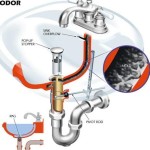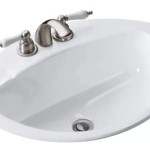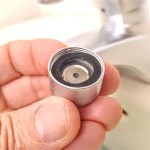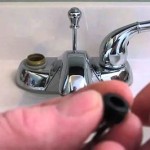How To Tile a Bathroom Countertop: A Comprehensive Guide
Tiling a bathroom countertop is a worthwhile project that can significantly enhance the aesthetic appeal and functionality of the space. While it requires careful planning and execution, the result is a durable, water-resistant, and visually appealing surface. This article provides a detailed, step-by-step guide to successfully tiling a bathroom countertop, covering everything from preparation to grout application.
Before embarking on this project, it is essential to gather the necessary materials and tools. These include your chosen tiles, thin-set mortar, grout, a notched trowel, a wet saw or tile cutter, a grout float, sponges, a rubber mallet, a level, a measuring tape, a pencil, safety glasses, work gloves, a bucket, a mixing paddle, and sealant. This comprehensive list ensures that the project can be completed efficiently and with professional-looking results.
Key Point 1: Proper Preparation is Paramount
The success of any tiling project hinges on thorough preparation. This stage involves assessing the existing countertop, ensuring its structural integrity, and preparing the surface to receive the tile. If the existing countertop is damaged or unstable, it will need to be repaired or replaced before tiling can begin.
The first step is to clean the existing countertop thoroughly. Remove any existing fixtures, such as faucets or sinks, and thoroughly clean the surface with a degreasing cleaner to remove any dirt, grease, or soap scum. This ensures proper adhesion of the thin-set mortar.
Next, inspect the surface for any cracks, unevenness, or other imperfections. Fill any cracks with a suitable patching compound and allow it to dry completely according to the manufacturer's instructions. Sand down any uneven areas to create a smooth, level surface.
Once the surface is clean and repaired, it is crucial to ensure it is waterproofed. Applying a waterproof membrane to the countertop is highly recommended, especially in a bathroom environment where exposure to water is inevitable. This membrane acts as a barrier, preventing water from seeping through the grout lines and damaging the underlying substrate. Apply the waterproof membrane according to the manufacturer's instructions, ensuring complete coverage of the countertop surface.
Finally, before applying the tile, dry-fit the tiles to determine the layout and ensure a pleasing aesthetic. This involves arranging the tiles on the countertop without adhesive to visualize the final appearance. Pay attention to the tile placement around the edges and corners, and make any necessary adjustments to minimize cuts. Mark the positions of the tiles with a pencil to guide the installation process.
Key Point 2: Tile Application: Mortar, Placement, and Cutting
With the countertop properly prepared, the next step is to apply the thin-set mortar and carefully place the tiles. This requires precision and attention to detail to ensure a uniform and aesthetically pleasing finish.
Begin by mixing the thin-set mortar according to the manufacturer's instructions. Use a mixing paddle attached to a drill to create a smooth, consistent mixture. Avoid adding too much water, as this can weaken the mortar and compromise its bonding strength.
Using the notched trowel, apply a layer of thin-set mortar to a small section of the countertop. The depth of the notched trowel will dictate the thickness of the mortar layer, ensuring proper adhesion of the tiles. Hold the trowel at a 45-degree angle and create consistent ridges in the mortar.
Carefully place the tiles onto the mortar bed, aligning them according to the dry-fit layout. Apply gentle pressure to ensure good contact between the tile and the mortar. Use tile spacers to maintain consistent grout lines between the tiles. These spacers are crucial for creating a uniform and professional-looking finish.
Continue applying mortar and placing tiles in sections, working your way across the countertop. Use a level to check the tiles periodically to ensure they are even. If any tiles are uneven, gently tap them into place with a rubber mallet.
When you reach the edges and corners of the countertop, you will likely need to cut some tiles to fit. Use a wet saw or tile cutter to make precise cuts. Always wear safety glasses when using these tools to protect your eyes from flying debris. Carefully measure and mark the tiles before cutting, and make sure to cut them slightly larger than needed to allow for minor adjustments.
After the tiles have been installed, allow the thin-set mortar to dry completely according to the manufacturer's instructions. This typically takes 24-48 hours. Avoid walking on the tiled surface or placing any heavy objects on it during this time.
Key Point 3: Grouting and Sealing: Finishing the Job
Once the thin-set mortar is fully cured, the next step is to apply the grout. Grouting fills the spaces between the tiles, creating a watertight seal and completing the overall appearance of the countertop.
Remove the tile spacers before beginning the grouting process. Clean the grout lines of any debris or excess thin-set mortar. This will ensure proper adhesion of the grout and a clean, uniform finish.
Mix the grout according to the manufacturer's instructions. Use a mixing paddle to create a smooth, consistent mixture. Avoid adding too much water, as this can weaken the grout and make it prone to cracking.
Using a grout float, apply the grout to the tile surface at a 45-degree angle, pushing it into the grout lines. Work in small sections, ensuring that all the grout lines are completely filled. Remove any excess grout from the tile surface with the grout float.
After the grout has been applied, wait approximately 15-30 minutes for it to set slightly. Then, use a damp sponge to wipe away the excess grout from the tile surface. Rinse the sponge frequently with clean water and wring it out thoroughly to avoid saturating the grout lines.
Continue wiping the tile surface until it is clean and the grout lines are smooth and uniform. Use a clean, dry cloth to buff the tile surface and remove any remaining grout haze.
Allow the grout to cure completely according to the manufacturer's instructions. This typically takes 24-72 hours. Avoid exposing the grout to water during this time.
Once the grout is cured, apply a sealant to the grout lines to protect them from stains and water damage. Use a grout brush to apply the sealant evenly to the grout lines, ensuring complete coverage. Allow the sealant to dry according to the manufacturer's instructions.
Finally, reinstall any fixtures that were removed before tiling, such as faucets and sinks. Apply a bead of caulk around the edges of the fixtures to create a watertight seal.
In addition to the technical aspects of tiling, selecting the right type of tile is important for achieving the desired look and functionality. Porcelain tiles are a popular choice for bathroom countertops due to their durability, water resistance, and wide range of styles and colors. Ceramic tiles are another option, but they are generally less durable than porcelain tiles. Natural stone tiles, such as granite or marble, can also be used for bathroom countertops, but they require more maintenance and are more susceptible to staining.
The choice of grout color can also impact the overall appearance of the tiled countertop. A light-colored grout can make the tiles appear larger and brighter, while a dark-colored grout can create contrast and highlight the tile pattern. Consider the overall design of the bathroom when selecting the grout color.
Regular cleaning and maintenance are essential for preserving the beauty and functionality of the tiled bathroom countertop. Clean the countertop regularly with a mild detergent and water. Avoid using abrasive cleaners or scouring pads, as these can damage the tile and grout. Periodically reseal the grout lines to maintain their water resistance and prevent staining. With proper care and maintenance, a tiled bathroom countertop can provide years of beauty and functionality.

Tile Bathroom Countertops

Ceramic Tile Bathroom Countertops

Tile Countertops For Bathrooms And Kitchens The Good Guys

How To Paint Tile Countertops And Our Modern Bathroom Reveal Bright Green Door

Full Bathroom Remodel Part 7 Tile Counter With Sink
11 Tile Counter Ideas For Kitchens And Baths

How To Paint Tile Countertops And Our Modern Bathroom Reveal Bright Green Door
:strip_icc()/102130266-3174ac7d31314c7abfc80a1b65a11dd6.jpg?strip=all)
18 Luxurious Bathroom Countertop Ideas For All Budgets

Full Bathroom Remodel Part 7 Tile Counter With Sink
:strip_icc()/101963997-428f882f0c604f7cb5e07f81516e96d9.jpg?strip=all)
18 Luxurious Bathroom Countertop Ideas For All Budgets
Related Posts







